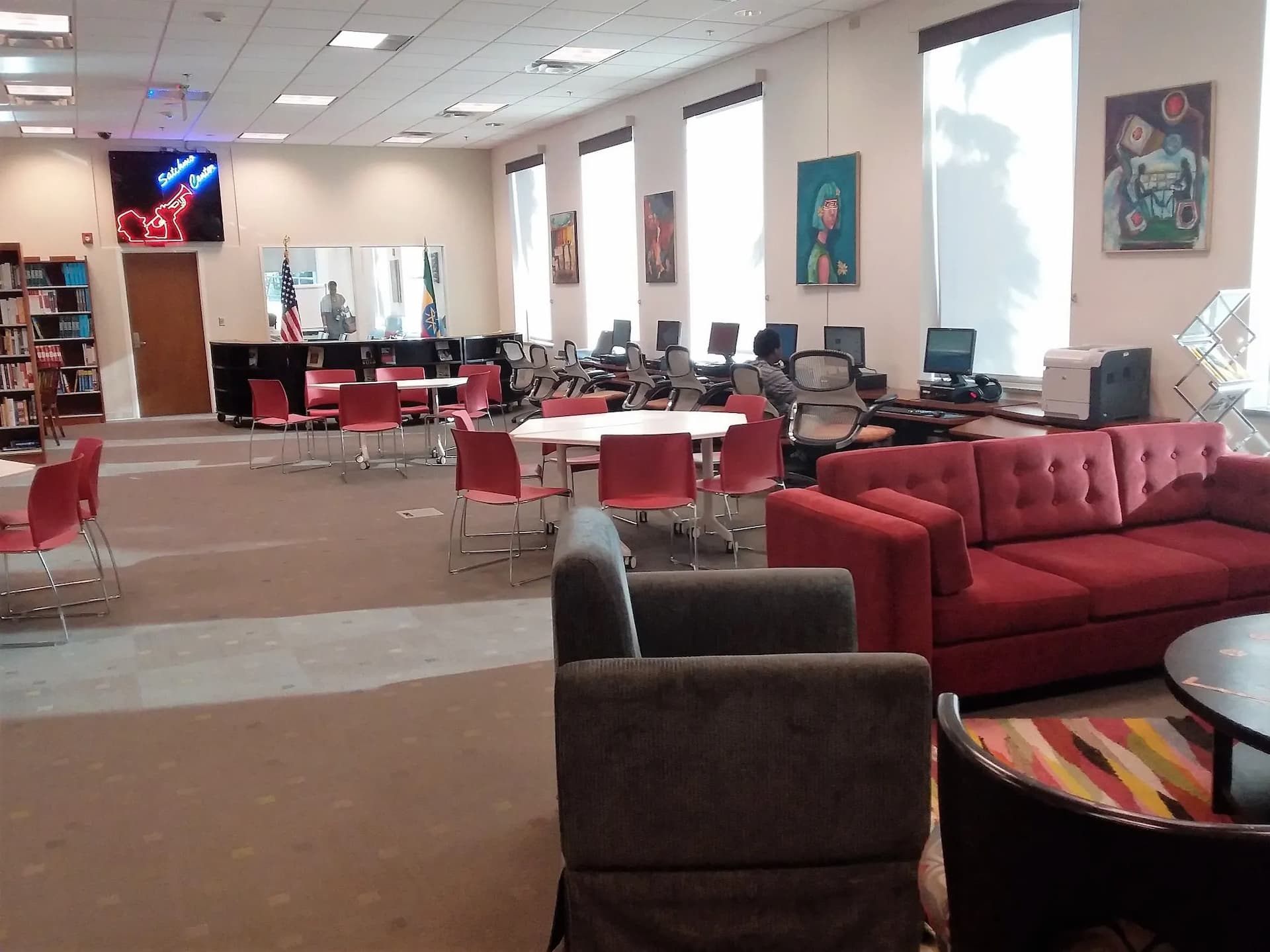Progress for 0 ad
Progress for 1 ad
Progress for 2 ad
Progress for 3 ad


Daniel Metaferiya
Addis Ababa, Ethiopia

Scores of students were crowded around the gates of the United States embassy compounds on a late Wednesday two weeks ago. Flushed with excitement, the students seemed unfazed during the rigorous security check at the gates, as if they had grown accustomed to the process. Unlike many who visit the embassy to follow up on visa applications, the students were pursuing an academic objective. For the last seven years, the Satchmo Center has been helping students with an interest in STEM (Science, Technology, Engineering, and Mathematics) find valuable resources
Named after jazz maestro Louis Armstrong, the Center, established in 2001 to foster cultural and informational exchanges between the two countries, has become an academic enclave for thousands of Ethiopian students. Fitted with an extensive library, state-of-the-art computers, iPads for in house use and modern lab equipment, students spend several hours experimenting with resources rarely available outside elite academic institutions. While not limited to STEM, many students access the Center for exactly that.
Miklol Girma, a 24-year-old data processor with a lifelong interest in technology, attributes most of his current professional skill set to his days at the Center. Seven years back, then a tenth-grade student, he used to spend hours transfixed on the high-tech computers, a 3D printer, and programmable bots unlocked through his access to Satchmo.
“I did not own a laptop, so I began spending more time to use their iPads to study,” Miklol told Shega.
The data analyst continued to sharpen his computer, language, and soft skills by attending training sessions offered by the Center. Miklol realized the sort of resources students in the American school system were benefiting from and worked hard to bridge the gap.
“My mindset changed significantly,” he says.” I even kept going after graduation.”
He says some of his friends even managed to find academic opportunities at the Massachusetts Institute of Technology (MIT) in the US using skills honed at the Center
While the Satchmo Center in Addis Ababa has moved from its former location Wemezeker Library, back in Miklol’s days, it has expanded across the rest of Ethiopia. Academic programs are now being offered from centers in Meqele in Tigray, Bahir Dar in Amhara, Jimma in Oromia regional states, and Dire Dawa City. A Satchmo Center is also located in St.Mary University in the capital.
“Over 15,000 students are enrolled in programs organized by the Center,” says Stewart Davis, Acting Director of Satchmo and Asst. Director of Cultural Affairs at the Embassy.
He says most of the students are from high schools, even though any interested youth with a formal identification (including a school ID) can enroll. A recent 12-week program for recent college graduate women, dubbed ‘She Can’ has also begun to draw significant interest, according to Stewart.
“We also have a program organized by women doctors,” he told Shega, referring to Yene health seminars hosted at the St.Paul Hospital.
The Program involves regular presentations by doctors on women's health tailored to the youthful audience.
Perhaps more famously, the Satchmo Center organizes the Mandela Washington Fellowship, which brings together aspirant young leaders from several African countries for a training opportunity in the US. Stewart fondly recalls speeches by Fellows who have expressed a sense of feeling a continental identity after attending the program
Nonetheless, hundreds of students who flock to the Center do so to gain access to its STEM offerings.
Matan Tesfamichael, an 11th grader eyeing a career in engineering, says the equipment and free courses at the Center are helping him materialize his design ideas. He says machines formerly accessible only on YouTube videos are at his fingertips.
“I built my first 3D printed gear within two weeks of visiting the program,” Matan told Shega.
The ambitious high school student attributes the speed in which he is absorbing new skills to the practical learning afforded at the Center. However, Matan’s pursuit of an opportunity to learn in a more hands-on environment is shared by most Ethiopian students, particularly in STEM fields.
Poor laboratory facilities and lack of instructional materials have been cited as one of the top three challenges in implementing STEM curriculums in Ethiopia by local research. Despite Ethiopia pursuing a 70:30, STEM to humanities, student placement strategy at public universities for nearly two decades, practical experience has remained elusive for most graduates. Many fresh graduates find themselves underprepared for the workplace and often end up switching careers or being unemployed altogether.
While initiatives like STEMpower, a Sub-Sahara-focused nonprofit, and Satchmo’s programs relieve some of the material crisis in STEM, comprehensive education reforms could be required for a lasting remedy. A labor force with an abundance of adept STEM graduates has also proven time and again to be an engine for economic growth and development.
👏
😂
❤️
😲
😠

Daniel Metaferiya
Daniel Metaferiya is a writer, journalist and radio host, with a keen interest in technology. He follows developments in Ethiopia's startup ecosystem closely and is passionate about profiling unique MSMEs.
Your Email Address Will Not Be Published. Required Fields Are Marked *